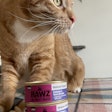
Should Pakistan invest in domestic pet food production? The country’s recent economic downturn has renewed the government’s focus toward reducing its import burden by enhancing local production and export capacity. With the downturn impacting the poor significantly more, even senior economists are sometimes making comparisons to the unnecessary import bill with products that can be easily produced locally – such as pet food.
Mrs. Arbab, owner of Pet Mania Pakistan, agrees that Pakistan cannot continue forward without setting up new industries. Having worked as one of the country’s largest importers of pet food in the previous decade, she thinks policies and expertise are aligning for Pakistan to establish local pet food production, based on the fact that customs duties on imported pet food raise the cost by 110%, and may likely increase soon.
Mrs. Arbab also cites the growing Pakistan pet food market, which has increased 20% a year, compared to the 6-8% rise in the global pet food market. “The Pakistani pet food market has grown over 20% a year for the past three years consecutively,” she says. “Currently, the market is about 4,000 to 5,000 tons of pet food per year. Less than 5% is locally manufactured, while 95% is imported.”
Fish feed affects pet food production in Pakistan
A similar situation arose in the Chinese and Indian pet food markets from 2000-2005 and 2005-2015, respectively, which saw their markets soar past 20% growth per annum, Mrs. Arbab adds. The catalyzing factor in both these countries was animal feed, specifically the development of industrial fish feed. In her mind, the time to strike is now, since Pakistan last year provided US$87 million in funding for aquaculture development in the country, part of an almost US$2 billion package for agricultural emergency.
“Whenever fish feed factories enter the market of a country, pet food experimentation also occurs,” she explains. “The reason is that the core machine, an extruder, is the same for both industries. Since fish food season is off in winter, factories attempt to make pet food, but with a 90% failure rate.”
The high failure rate is not because of capacity; a one-ton-per-hour pet food plant can easily produce 200 tons per month on an eight-hour daily shift, more than enough to fulfill half the national demand. Quality of ingredients, palatability, sanitation and hygiene remain the challenges.
Joint ventures and international expertise can succeed in Pakistan
“Pakistani customers are very brand oriented and quality conscious,” says Mrs. Arbab. “So at minimum, local production must meet quality standards to be considered successful. To that end, the model mostly likely to work in Pakistan is a joint venture with an international brand.
“Since international brands remain hesitant to invest in Pakistan, such a model is the best of both worlds,” she adds. “Their expertise and branding can provide a boost to local production potential by combining with local partners like us. After all, we have the ability to procure land for production and ingredient sourcing, as well as a nationwide distribution network through our import activities. Mostly the equipment remains, which reduces the liability of international licensing investors.”














